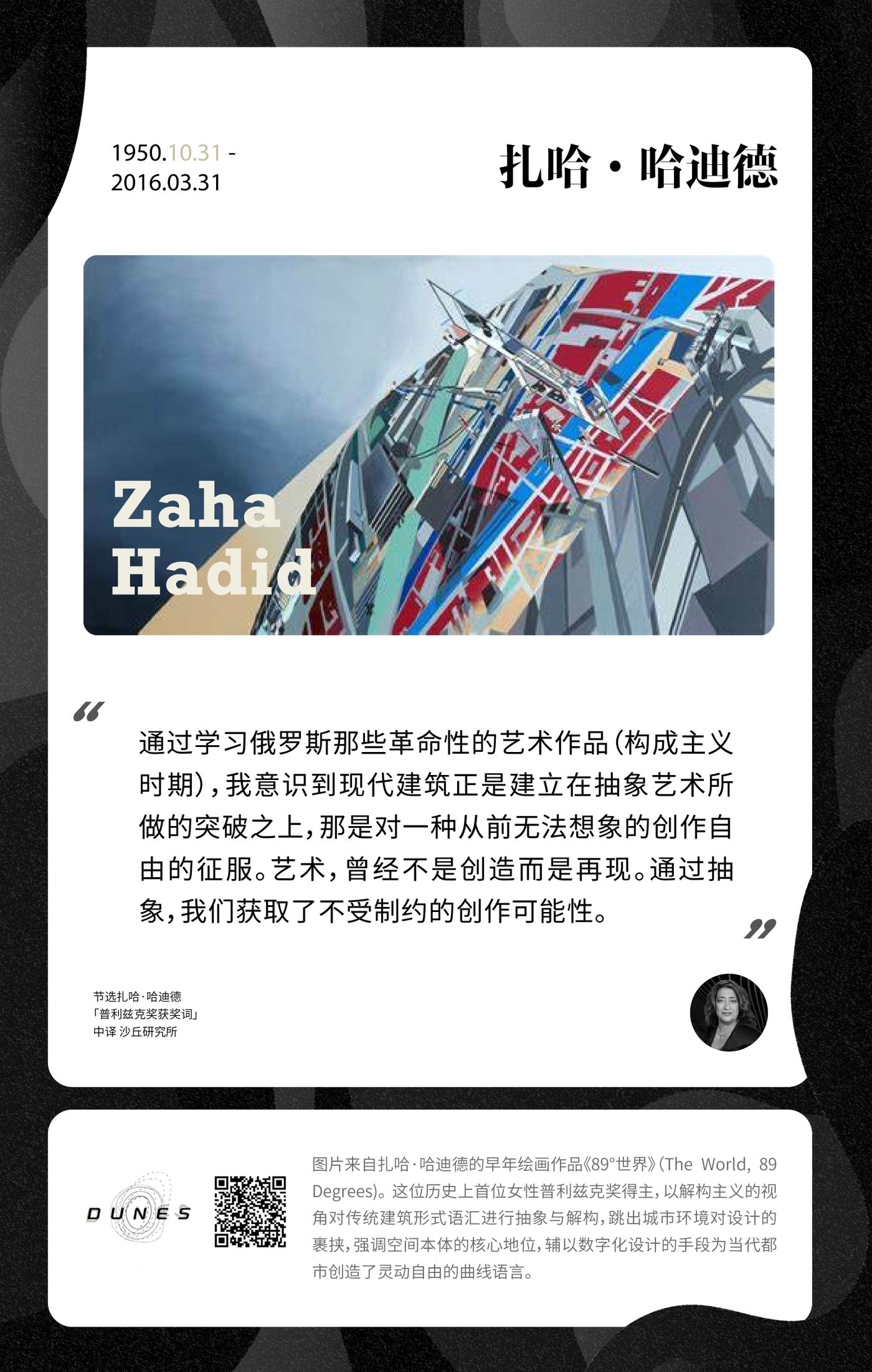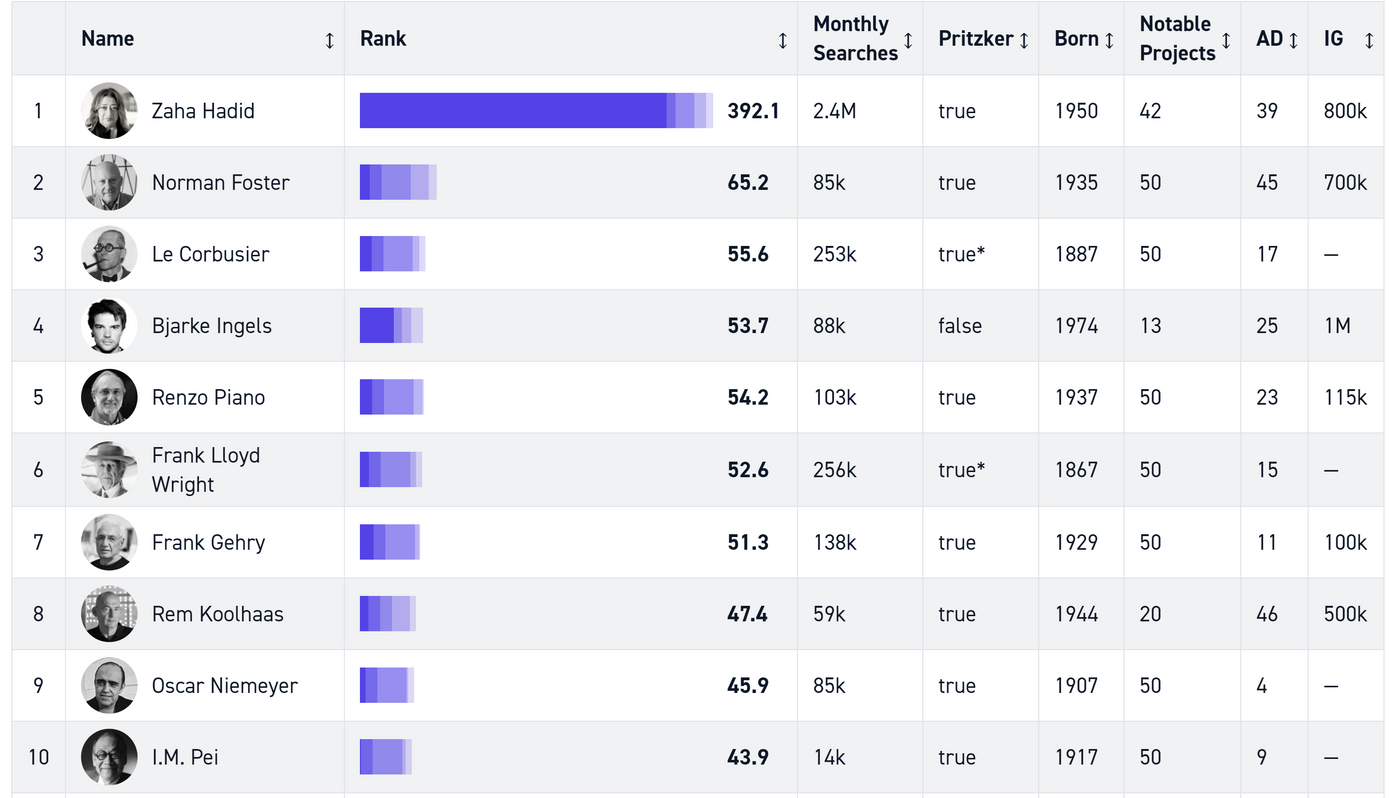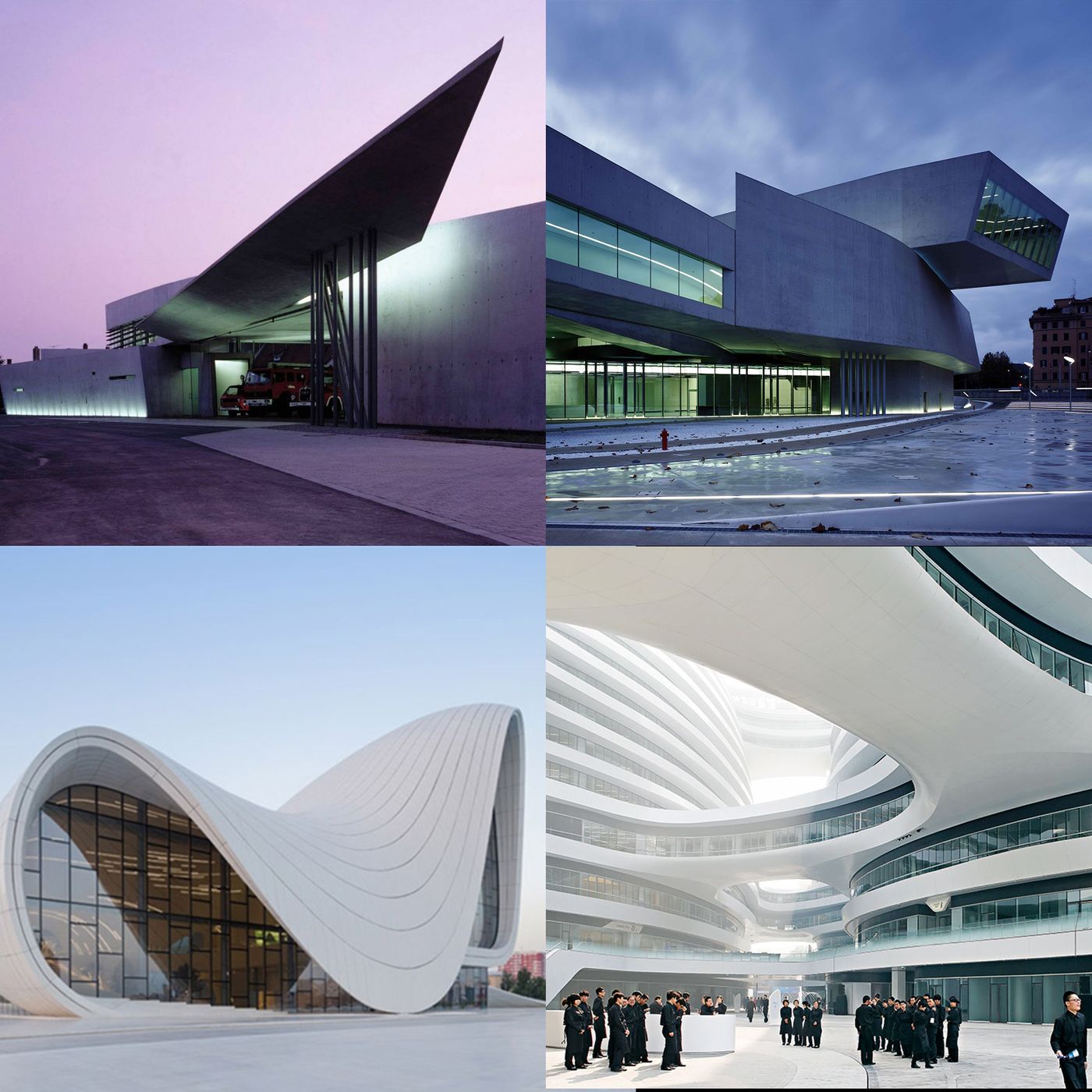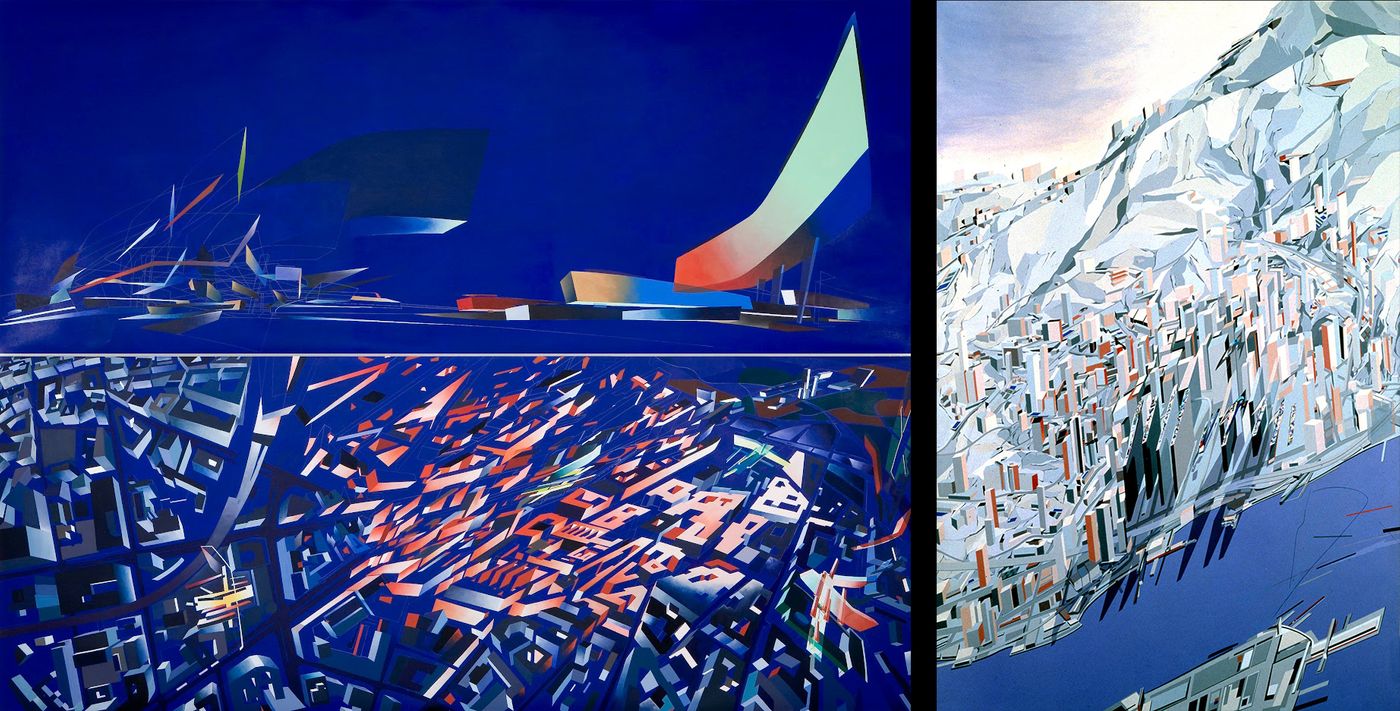It would be very narrow to understand Zaha just by "playing the curve"
70 years ago today, Zaha Hadid was born.

01 When it comes to communication, Zaha's labels far outweigh her thoughts
Zaha is controversial, but her fame is undeniable. If architects were ranked by internet buzz alone, Zaha Hadid would dominate all other masters.

Zaha Hadid was born in Baghdad, Iraq in 1950. She experienced the country's brief opening and prosperity as a child. She then moved to the UK; after graduating with a degree in mathematics, she studied at AA (School of Architecture) with Rem Koohas and Elia Zenghelis.
In 2004, when only a few small-scale projects were completed, Zaha became the first female architect to receive the Pritzker Prize. In the following ten years, her team has completed large-scale and super-large public buildings all over the world, including theaters, museums, art galleries, airports, etc. Outside of architecture, her team is also involved in other design categories such as clothing, jewelry, and furniture.

Zaha Hadid died of heart problems in 2016.
Whether before or after his death, as an iconic star architect, Zaha's influence has long been beyond the discussion within architecture. If we dissect her career and works, it may not be difficult for us to understand why she has a very high amount of communication in the public sphere - female identity, immigrant identity, and cross-border identity are all reflected in her. In addition, her completed projects often impress city dwellers with their unconventional, non-linear curvilinear shapes, while "design fee", "construction cost", "engineering difficulty", and "bad temper" further add to the hashtag. If we can use Debord's "Society of the Spectacle" as a supplement to explain the spread of images on the Internet today, then Zaha has provided a wide audience with a continuous stream of surprising and topical spectacles.

But to understand Zaha in terms of mass communication and the paradigm of a commercial architect would fall into a parochial view. If we go back to her search and creation in her early student days, we may be able to see a different profile of Zaha.
In fact, from her student work at AA (School of Architecture) to her earlier projects at OMA, we hardly see her famous "curve". But it was from then on that Zaha’s designs and ideas developed a unique and innovative spirit. In 1977, Zaha's graduation project was titled "Malevich's Tektonik" - a 14-storey hotel on a bridge over the Thames. In the composition of Malevich's Suprematist paintings, Zaha finds an abstract construction method that allows her to subtly design space and function.

Zaha’s work is not a spatialisation of Suprematist paintings. Soon, she responded to the standard form of industrial modernism. She jumped out of Euclidean geometry and began to design with "impure" and "unconventional" geometry, and then further developed a trend. Nearly "liquid" form and space.
When I first started trying to create buildings, I looked at them like individual jewels; now, I want them to connect to form a new landscape that flows with contemporary cities and the people who live in them.
- Zaha Hadid, Architecture Unlimitted Issue 1
02 Architecture is not just construction, Zaha is also fascinated by abstract representation on paper
Regarding the period of constructivism and supremacism in Russia at the beginning of the 20th century, Zaha once mentioned its profound influence on personal creation in the acceptance speech of the Pritzker Prize:
By studying the revolutionary works of art in Russia, I realized that modern architecture is based on the breakthroughs made by abstract art, the conquest of a previously unimaginable creative freedom. Art, once was not to create but to reproduce. Through abstraction, we gain unconstrained creative possibilities.
During my early years of study and work at the AA (School of Architecture), I was fascinated by two great masters, Malevich and Lisitzky, who brought me back to that exciting historical period. It is important to trace this period - the source of the power that inspires modern architecture. There's incredible passion and unexpected variety here. (I very much hope that these treasures of early avant-garde architecture will survive the wave of Russian economic expansion we face today).
- Zaha Hadid, 2004 Pritzker Prize acceptance speech



The three images above juxtapose paintings from the Constitutive/Suprematist period with Zaha's earlier paintings, from which we can roughly see the source of the architect's strong sense of form. Obviously, we cannot write off Zaha Hadid's full artistic heritage and formal talent and aura just based on her later commercial gestures, built projects and urban context disputes.
A paradox or question more worthy of our consideration may be that the Russian masters whom she admired—beyond their paper-represented forms—had their creative passions rooted in a reformed and changing zeitgeist. Combining art with advanced technology and the social goals of communism," trying to promote an era of "art for the people." However, with her excellent sense of form, Zaha plays more of a centralized, capital-heavy participant in her creation and practice. In this sense, compared with her predecessors, we seem to see less of her interest in capital. reflection and resistance.
Click here to jump to Dune Dictionary Quiz "Constructivism-Constructivism"
Click here to jump to the original text , welcome to pay attention to the public account "Dune Research Institute"
Like my work? Don't forget to support and clap, let me know that you are with me on the road of creation. Keep this enthusiasm together!

- Author
- More